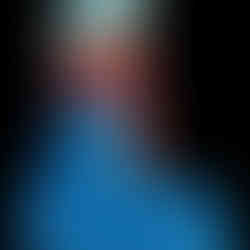Sodalite Explained
- Mike Crawford
- Aug 11, 2024
- 2 min read
(Posted by Mark Cole from the FMS FB group)
Sodalite is a mineral and a mineral group. The sodalite group contains the minerals sodalite, hauyne, nosean, and lazurite. A mineral group has the same crystal structure, but the cations and anions in the structure are different. The endmember formula for the sodalite group minerals are:
Sodalite -- Na4(Si3Al3)O12Cl
Hauyne -- Na3Ca(Si3Al3)O12(SO4)
Lazurite -- Na7Ca(Al6Si6O24)(SO4)(S3) · H2O
Nosean -- Na8(Al6Si6O24)(SO4) · H2O
There is some possible cation substitution in the sodalite-hauyne series of Ca for Na in sodalite. Potassium (K) can also substitute for Na in both sodalite and hauyne. All of the sodalite group minerals have been reported from the Sar-e-Sang area of Badakhshan Province, Afghanistan. Visual examination usually cannot positively identify if the mineral is sodalite, hauyne, or nosean. Lazurite is unique in that it is dark blue, non-fluorescent, and has a blue streak.
This specimen is from Sar-e-Sang, Badakhshan Province, Afghanistan. The minerals in this specimen include a large grayish-green crystal of either sodalite or hauyne in a marble (calcite) matrix. The crystal has been partially replaced by gonnardite. A small amount of phlogopite occurs in the marble matrix. There is also a uranyl activated unknown mineral that fluoresces green. The uranyl ion may be in the some of the gonnardite.
The 7cm crystal in this specimen was sold as sodalite and the crystal habit is consistent with sodalite. However, most sodalite group specimens from Afghanistan that have gonnardite alteration are usually described as hauyne. More study of the sodalite group minerals from Afghanistan is needed.
The sodalite/hauyne crystal fluoresces orange-red in LW illumination and gray in MW. There is modest afterglow from MW illumination. There are bright orange spots scattered across the crystal in the LW image. The spots were created by grains of uraninite that were next to the crystal and radiation from the uraninite altered the crystal. It changed the fluorescence, there is no afterglow in the spots, and they are tenebrescent.
The second set of pictures shows another view of the specimen. The crystal has been broken, offset and cemented back together with calcite. Broken crystals that have their fragments recemented by calcite is common occurrence at Sar-e-Sang. Most sodalite forms by crystallizing from an igneous melt. Afghan crystals such as this one formed in fractures and vugs from very high temperature and pressure hydrothermal fluids expelled from metamorphism of nearby rocks. Another hydrothermal event broke the crystal and recemented it with calcite. This second event or a third event altered the crystal to gonnardite.
Fluorescent LW spectra of the sodalite/hauyne have two broad peaks, one at 450nm and the other around 600nm to 620nm. Superimposed on the 600-620nm peak are several smaller peaks. The overall broad peak and the smaller vibronic peaks are activated by disulfide ions. The 450nm peak may be activated by dioxide ions. The spectrum of the radiation altered fluorescence retains the vibronic peaks and the maximum shifts to a longer wavelength. The 450nm peak is greatly reduced in the altered spectrum.
The gonnardite spectrum has a maximum brightness at 440nm. Titanium may be the activator for this fluorescence.
The specimen is 9cm by 7cm.





















